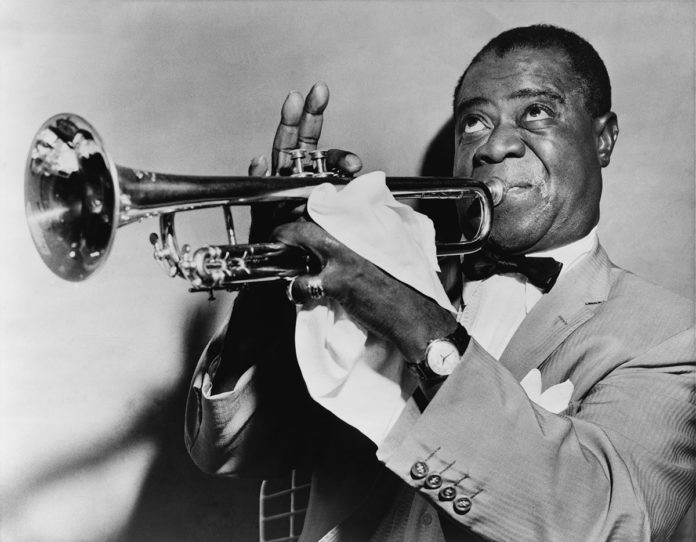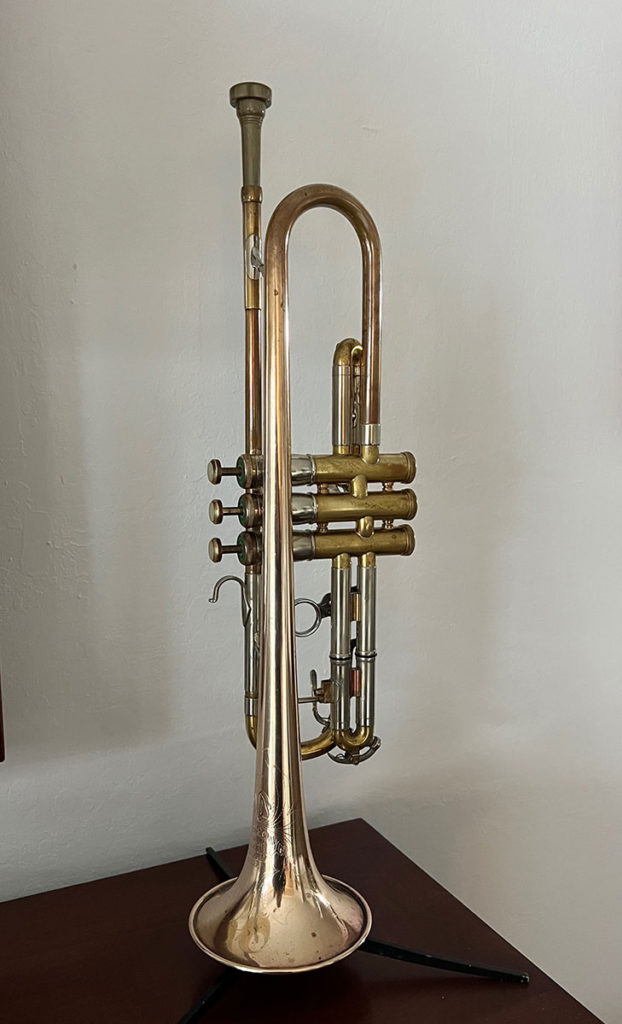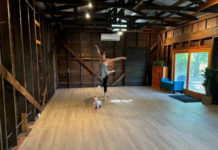
Perhaps the most famous trumpeter of the 20th century, Louis Armstrong was a force of nature on the music scene from the 1920s through 1971, when he passed away from a heart attack.
Born in 1901, his New Orleans neighborhood, “the Battleground,” was a tough place. At age 7, Armstrong began working for a Lithuanian Jewish family collecting junk and coal for resale. The Karnofskys gave Louis a tin horn to attract customers to their horse wagon. The family had young Louis at their dinner table nightly and their kindness extended to loaning him money to buy a cornet. And thus, Armstrong began mastering an instrument on which he changed the “sound” of music.

Improvisation, as Armstrong did it in the early 1920s, was not how horns were played. Early recordings reveal a creativity and virtuosity simply not heard in trumpeters of the time. The phrase “mind-bending” is perfect when applied to Louis Armstrong’s unique note-bending sound that ushered in the Jazz Age.
Playing over 50 years, “Ambassador Satch” brought a love of jazz to the world through his infectious humor, gravelly voice and unparalleled playing. Knowing only Armstrong’s music from the 1950s and ’60s dims his genius, which revolutionized trumpet playing decades earlier.
Fun facts: Armstrong averaged 300 performances per year, recorded more than 750 albums, composed 50 songs, appeared in 30 movies, and wrote 10 magazine articles and two autobiographies. His nickname, “Satchmo,” stems from the notable size of his mouth; British editor Percy Brooks introduced him by shortening “Satchel Mouth” to “Satchmo”—the name stuck.
Armstrong wore a Star of David pendant honoring the family that helped raise him. He was, reportedly, the only Black jazz musician to publicly oppose segregated schooling in the 1950s. He received just $250 for recording “What a Wonderful World” in 1967 so that session musicians could receive overtime rates.
The horn pictured here is an “Olds.” First produced in 1932 by F.E. Olds, it became legendary. This model is known as the Olds Recording Trumpet, and was much used in L.A. studios. Armstrong played a custom-made Henri Selmer; Miles Davis played a Martin Committee, also used by Dizzy Gillespie, Roy Eldridge and Chet Baker.








